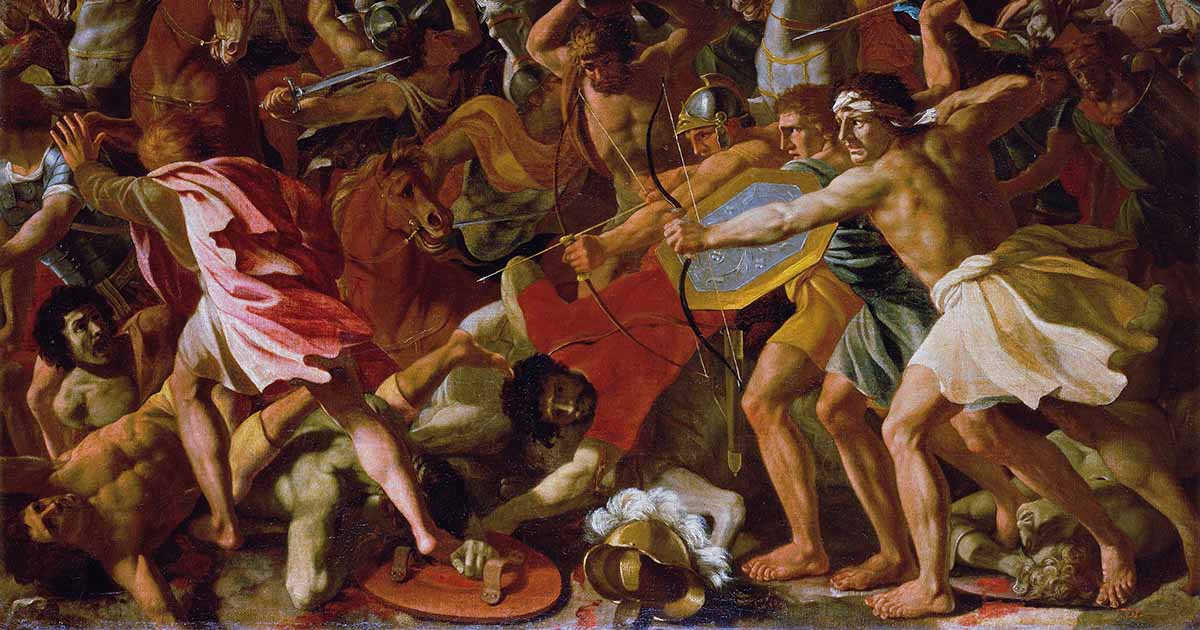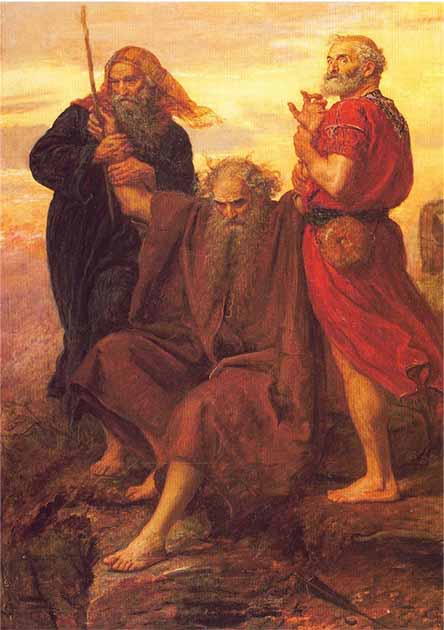The Biblical Amalek People Were Who?

If you’ve been following the news, you will have heard references to the use of the term Amalek which was cited by South Africa at the International Court of Justice in The Hague in January 2024. But what does this term mean and why did its use in public discourse trigger alarm bells?
Amalek within Biblical Scripture
Within the Bible, Amalek is described as an ancient tribe of the southern Levant. While no archaeological evidence has been definitively attributed to their existence, the Amalek appear in several Biblical stories and have come to represent the archetypal enemy of the Israelites.
Amalek is first mentioned in the Bible in Genesis 36:12. Described as being the “chief of the Amalek,” he is listed as a grandson of Esau, the brother of Jacob, through his son Eliphaz and his concubine Timna.

Painting of the Biblical tale of Joshua’s fight against the Amalek, by Pauwels Casteels. (Public domain)
Depicted as a nomadic tribe, the Amalekites are chronicled in the Exodus narrative as assailants who ambushed the Israelites at Rephidim en route to the fabled Promised Land. Led by Moses, this monumental journey—which is a seminal event and a central narrative in both Jewish and Christian traditions—sought the divine inheritance pledged to their ancestors.
According to the Biblical tale described in Exodus, Moses instructed Joshua to lead the Israelites in battle, while he ascended a nearby hill with Aaron and Hur. Legend has it that Moses held up the staff of God and, as long as he held up his hands, the Israelites prevailed. When weary, Aaron and Hur supported him until sunset, securing victory for the Israelites.
In later Biblical narratives, the enduring animosity between the Amalekites and the Israelites is vividly portrayed. Amalekites are depicted as a persistent threat, launching attacks and raids on their territory. In one story, their raid of Ziklag prompted David and his men to pursue and defeat them.

A 19th-century depiction of the Biblical tale of Moses holding the staff of God as the Israelites defeated Amalek. Victory O Lord! By John Everett Millais. (Public domain)
Within the Book of Samuel, God commanded King Saul to enact a campaign against the Amalek in retaliation. “King Saul is instructed by God to completely annihilate all of the Amalekites, including children, babies, animals, men, women, everyone,” explained Professor Atalia Omer in an ABC interview. Contrary to these instructions, the story claims Saul spared King Agag and some of the best livestock, for which he was rebuked and lost his kingship.

This biblical story is usually told during Shabbat preceding the Jewish holiday of Purim, which commemorates the Jewish people’s salvation from Haman’s plot to exterminate the Jews. Within the Book of Esther, Haman—who descended from the Amalekite King Agag—is identified as an official of the Persian Empire during the reign of King Xerxes I. The inference is clear; Saul’s failure to fulfil God’s instructions led to continued danger for the Jews.

19th-century painting of the Biblical tale of Esther Denouncing Haman, by Ernest Normand. The story of Esther denouncing Haman is a pivotal moment, commemorated during the Jewish festival of Purim. (Public domain)
The Weaponization of Biblical Literalism and Amalek in Modern-Day Discourse
In the Midrash—a form of rabbinic interpretive Jewish literature elucidating the Hebrew Bible for spiritual understanding—certain interpretations suggest that the Amalekites used witchcraft, magic or occult powers, which are practices explicitly prohibited in the Torah and disapproved of in Christian teachings. These portrayals underscore the spiritual battle between the forces of good and evil, with the Amalekites standing in opposition to God.
While the Amalek have come to represent the quintessential adversary of the Jews, Rabbi Jill Jacobs explained that these references are usually interpreted metaphorically, as a call to stamp out evil inclinations within. Nevertheless, religious extremists have associated Amalek with modern foes, including the Nazis and ISIS. These days, amongst certain groups the term has even come to encompass the Palestinians, although such interpretations are highly contentious.
None of this is new. In an article entitled “Genocide: A Commandment of the Torah,” Rabbi Israel Hess used the story of Amalek to justify wiping out Palestinians. Meanwhile, in 1994 an extremist murdered 28 Muslims praying at a mosque in the West Bank on Purim. According to Mother Jones, his grave has become a pilgrimage site for the Israeli far right.
So, to the recent references to the controversial term cited by South Africa at the International Court of Justice in The Hague in January 2024. Specifically, Amalek was mentioned in their case concerning the application of the Convention on the Prevention and Punishment of Crime of Genocide in Gaza.
The term “Amalek” was used by Benjamin Netanyahu, Prime Minister of Israel, in a speech delivered after the Hamas-led attack on Israel in October 2023. “You must remember what Amalek has done to you, says our Holy Bible,” stated Netanyahu in his televised statement. “And we do remember, and we are fighting.”
Though Israel rejected South Africa’s claims that the use of the term Amalek was a call to genocide, reactions to its use in modern-day discourse highlight the need to exercise caution when evoking historic and Biblical terminology. This care is necessary to avoid any incitement to violence and further escalation in historic tensions.